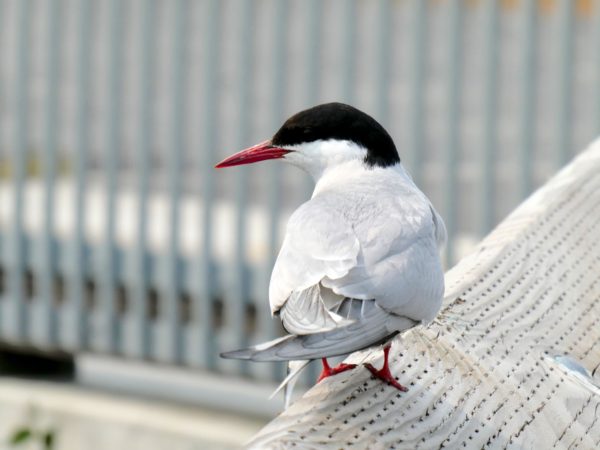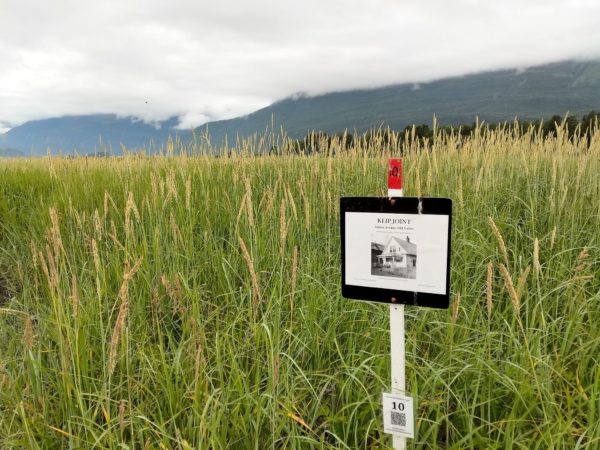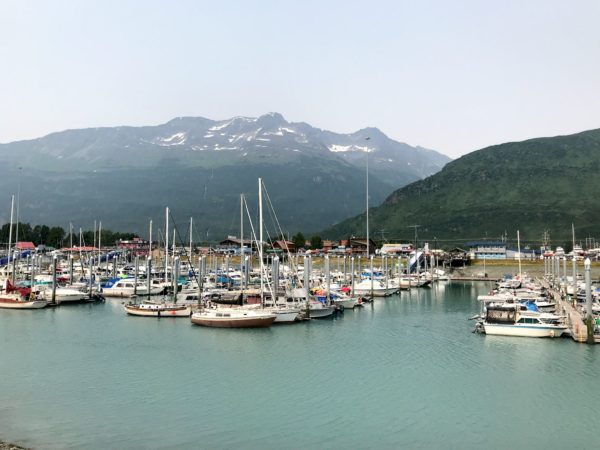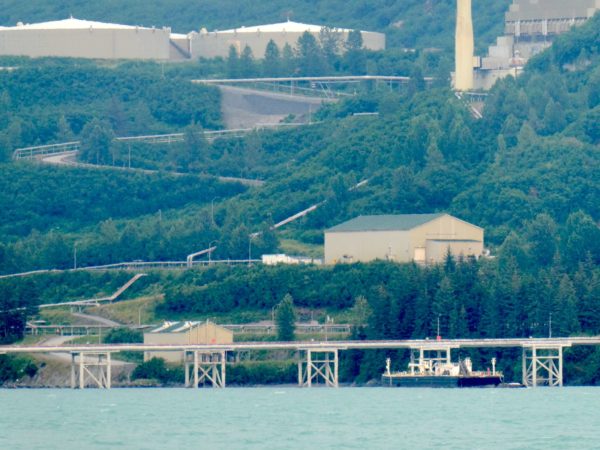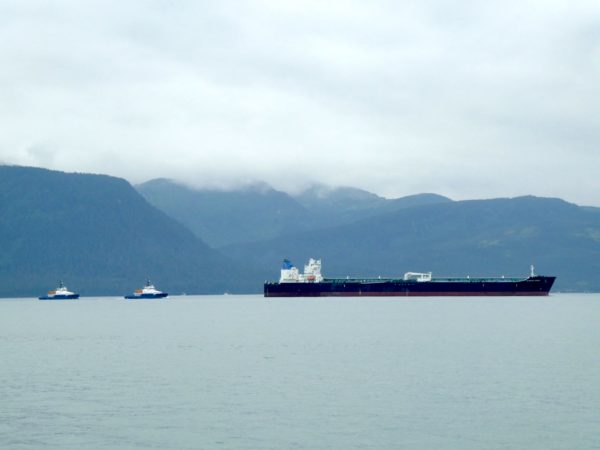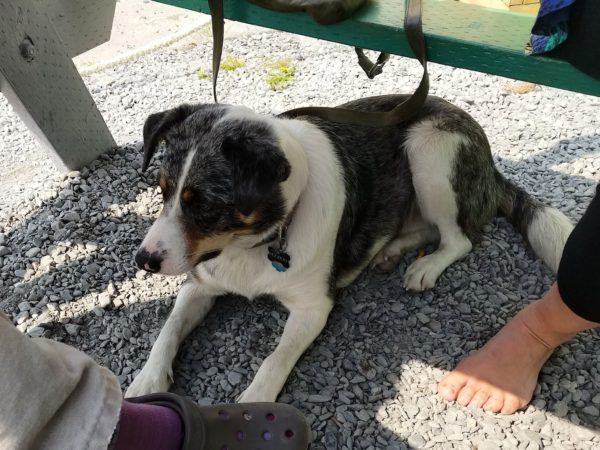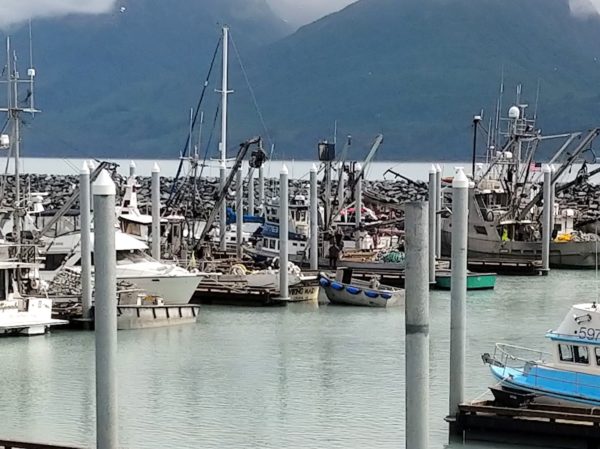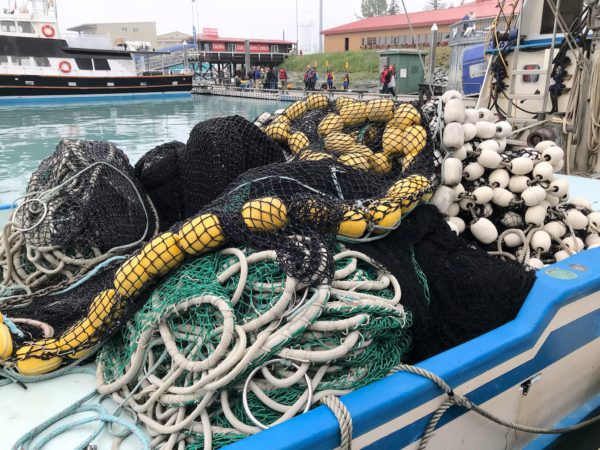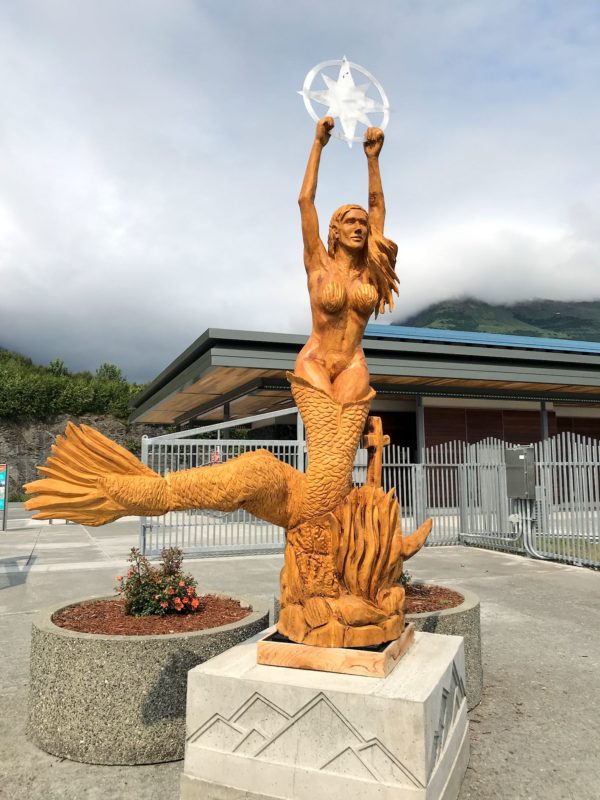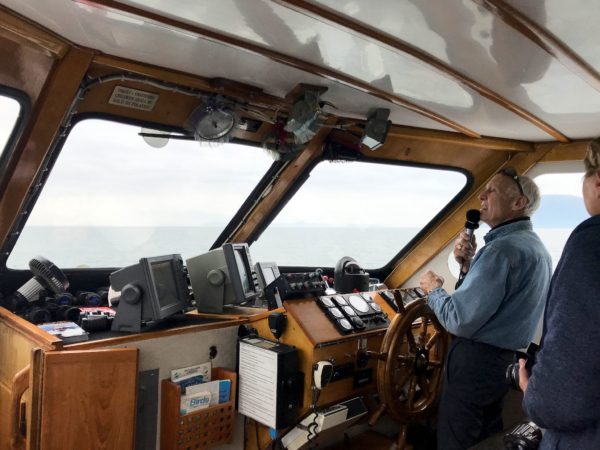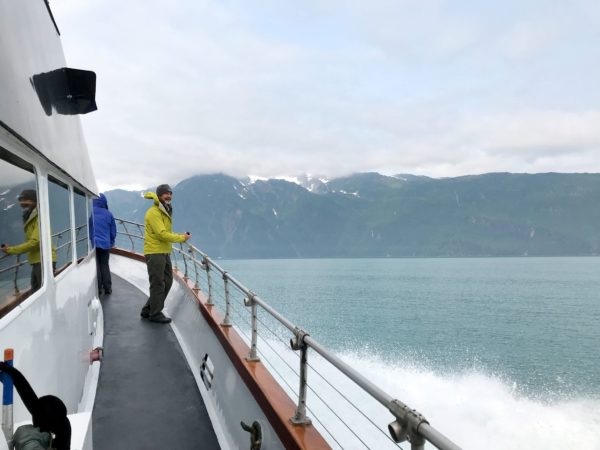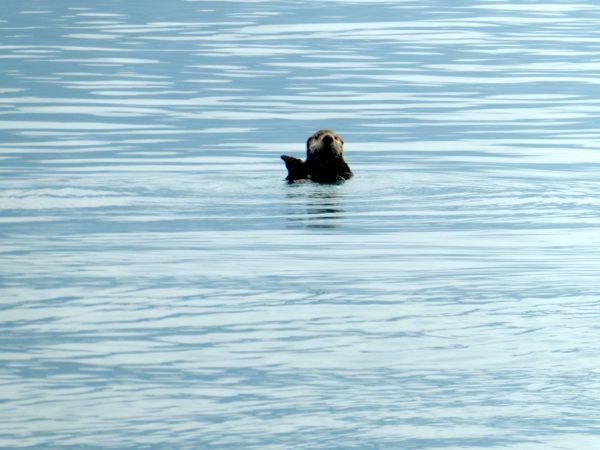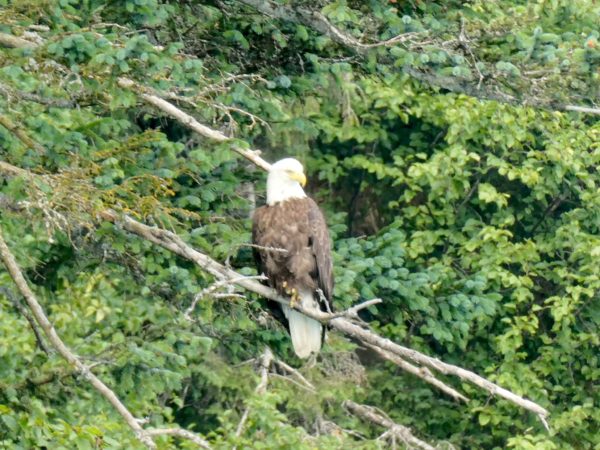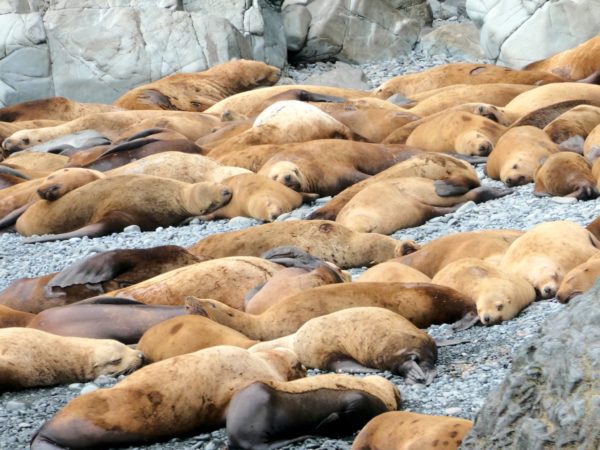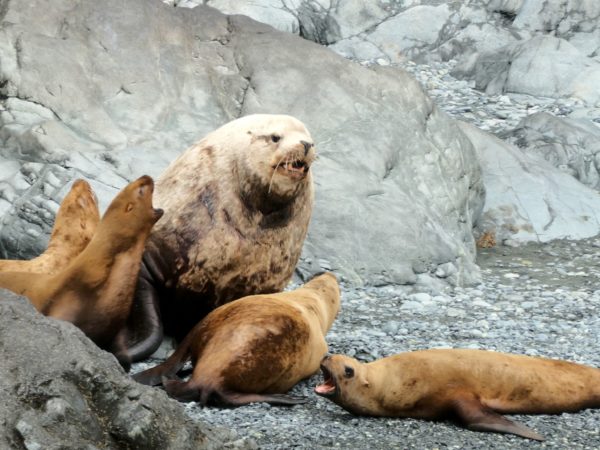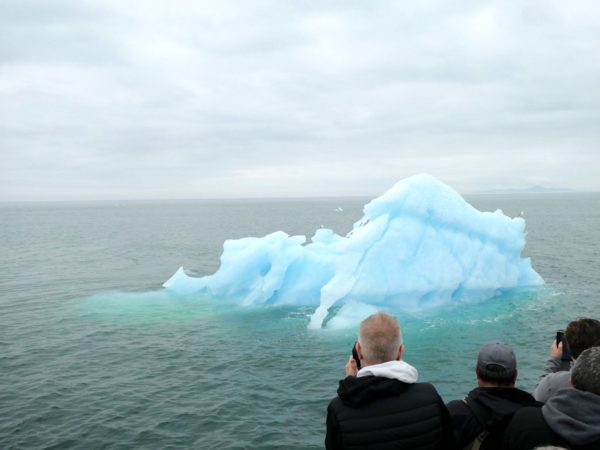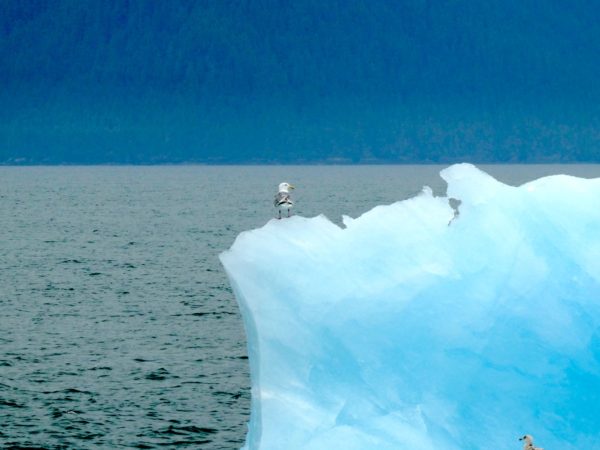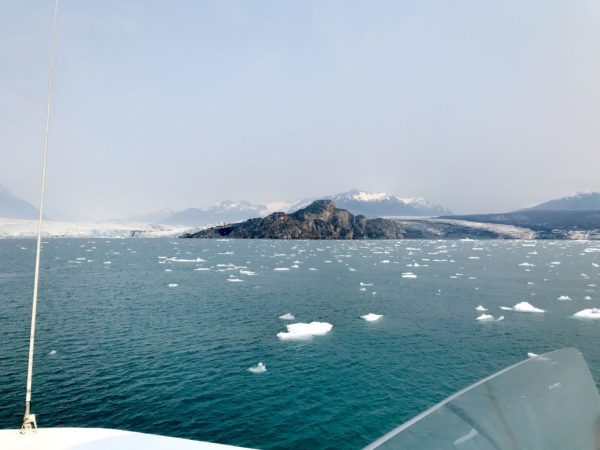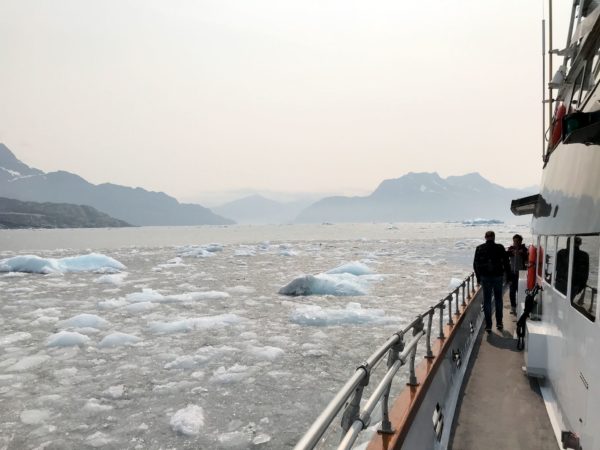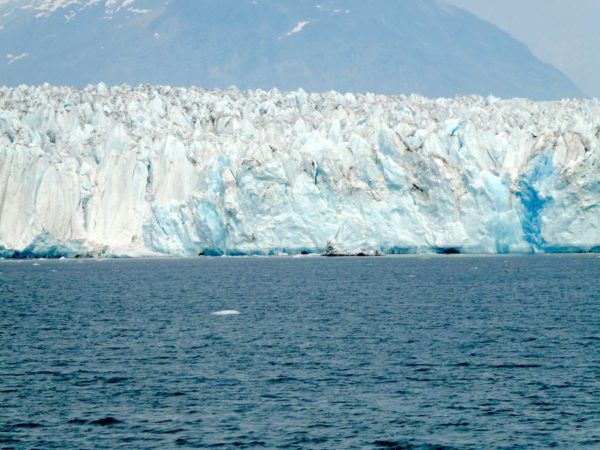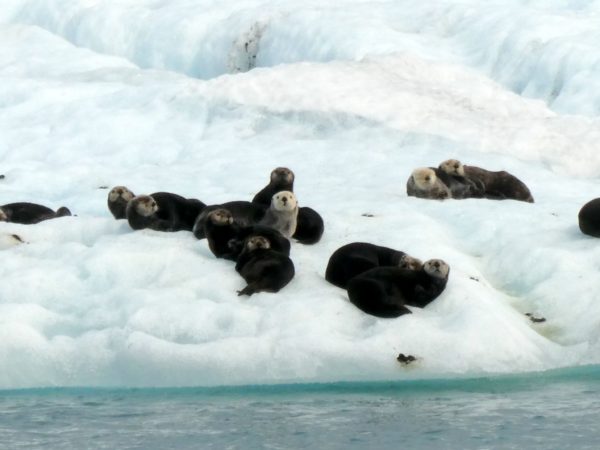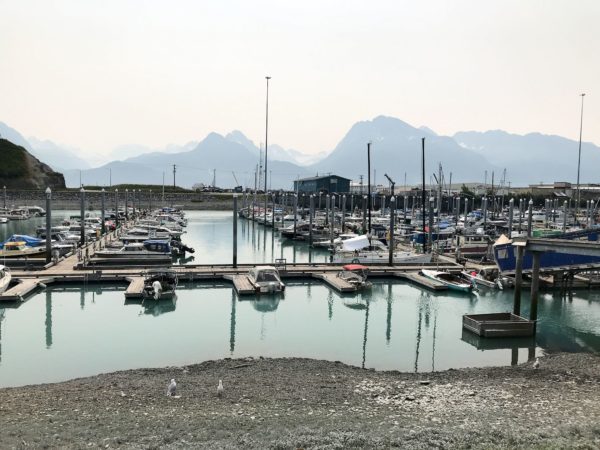
Valdez is a commercial fishing and shipping port with a history that is both colorful and tragic. It’s also a fun town to visit in a stunning location.
Recall that Mount Saint Elias, at 18,009 feet the second highest peak in the US, is only 10 miles from the ocean’s edge as the eagle flies (yes, we confirmed that this is the expression to use in Alaska). That means our relatively short drive to Valdez would cross yet another mountain range – the Chugach Mountains, the tallest, steepest mountains we’ve seen yet – before dropping into the city. Valdez is near the end of a narrow arm of the Prince William Sound where glacial rivers dropping down from tall, steep, glaciated mountains on 3-1/2 sides of the city turn the water a distinctive aquamarine color.
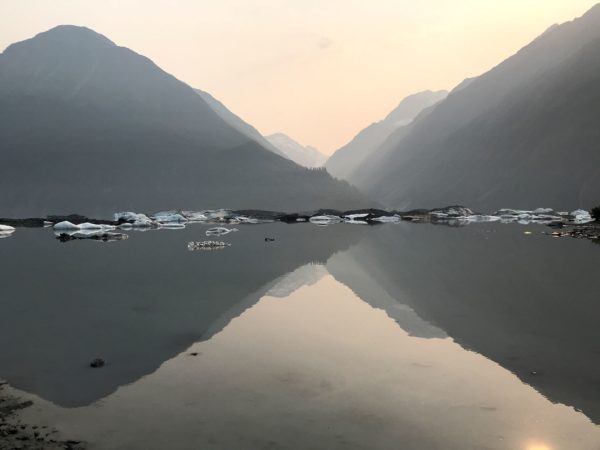
Gold was discovered in Alaska and the Yukon in the late 1800’s. In 1898, explorers found that Valdez was the northernmost, year-round, ice-free port in Alaska, thus the shortest overland hiking route to the Klondike gold mines. Word spread and miners seeking fortunes arrived en mass, along with entrepreneurs who ‘mined’ the miners (great expression, courtesy of the Valdez Museum) with goods and services of all kinds. A few years later, gold was discovered near Fairbanks and a wagon road was built from Valdez to facilitate the travel north. The road was improved in the 1920’s when new-fangled automobiles and burgeoning roadhouses (like the one we visited in Delta Junction) made tourism in Alaska possible. The road was improved again during WWII to connect Valdez to the Alaska Highway and provide a land route to the rest of the continent. It was paved in 1957.
The original town of Valdez was wiped out in the Good Friday Earthquake of 1964, still the largest earthquake ever reported in the US – 9.2 magnitude, lasting almost 5 minutes. As a result of the shaking, part of the town slid into the sea and most of the buildings were damaged or destroyed. Thirty-two people died in Valdez. Although many survivors moved away, those who remained worked to move the city to higher, more solid ground 4 miles away from the original town over the next 4 years.
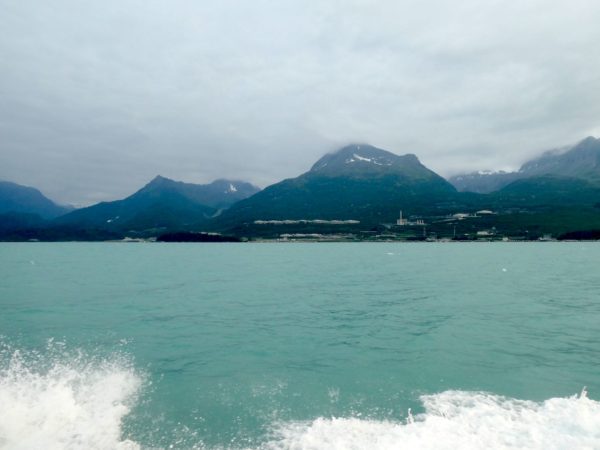
When oil was discovered in 1969 in Prudhoe Bay, calculations showed that despite the cost ($8 billion in 1977), the cheapest way to ship the oil out of the oilfields south for refining was a pipeline. Remember the gas crisis of the late 70’s? Seeking the northernmost, year-round, ice-free port in Alaska, the pipeline terminus was built in Valdez. Off limits to visitors, the terminus is visible from anywhere in Valdez.
Speaking of oil, the Exxon-Valdez oil spill which occured on March 24, 1989 (eerily, also occurring on Good Friday) was at the time the worst oil spill disaster ever in the US. Although it never reached the city of Valdez, the spill affected 1300 miles of Prince Edward Sound coastline with catastrophic implications that linger to this day. Thirty years later, the spill has stimulated huge amounts of research which have resulted in improvements in oil movement, spill prevention, and clean up. I just had to find a silver lining…
Valdez is famous for its snow and winter sports. The city gets an average of 300 inches (!) of snow while Thompson Pass, 30 miles outside of the city, averages 500 inches. Yum! Although there are no ski areas with lift service, locals and ski tourists access the legendary ski runs via helicopters, snow machines, and skinning/climbing.
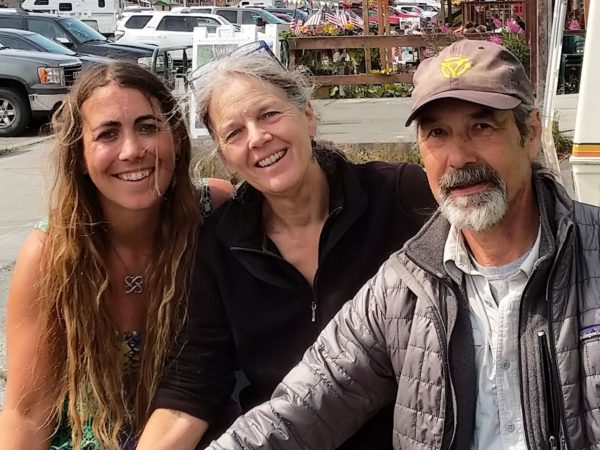
It was winter sports that attracted Galen (one of the original Vermontanans, as well as Helen and Mike’s daughter) to Valdez. It is the commercial fishing work and the rugged year-round beauty that is keeping Galen in Valdez. Silly us, we thought we could work around her schedule and get together. Ha! Fishing boats crews don’t have schedules! They fish when the salmon are running! Often on short notice. We were totally excited to meet up with Galen, and Hoodoo the wonder dog, for lunch on one of her shore days. One of the highlights of our time in Valdez!
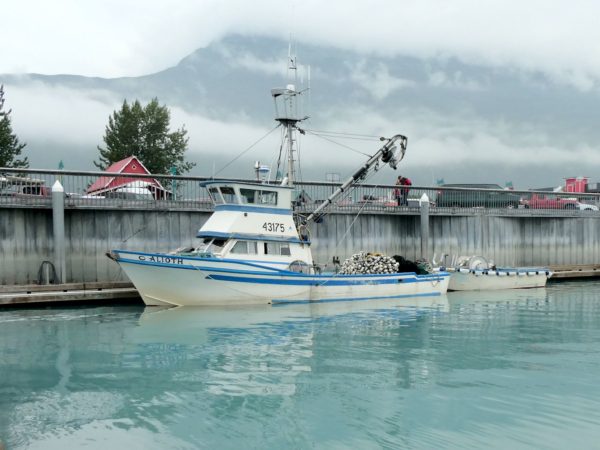
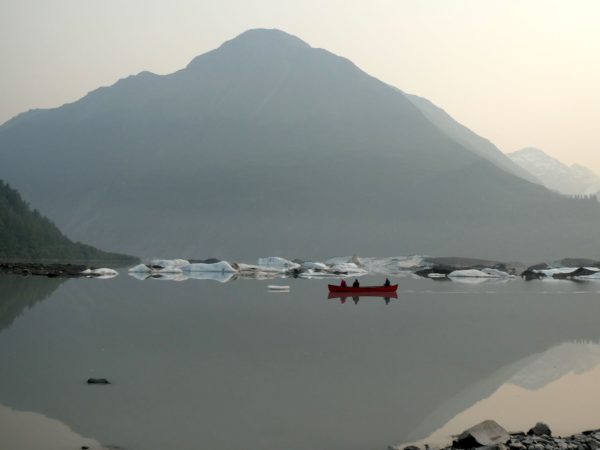
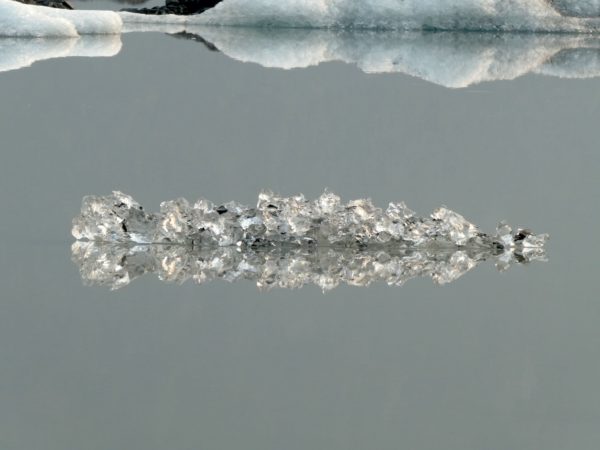
Valdez (pop 4000) is a small walkable city. Of course, the dramatic mountains and aquamarine harbor make it stunning. It’s the outside art installations, funky outdoor restaurants, finely curated museums making history come to life, outdoor vibe (kayaks and bikes everywhere, in summer), fishing, fish hatchery and fish processing sights that make the town unique. And, we were quite fortunate to hear about camping at Valdez Glacier Lake. Yup, view of the Valdez Glacier, the lake and the icebergs.
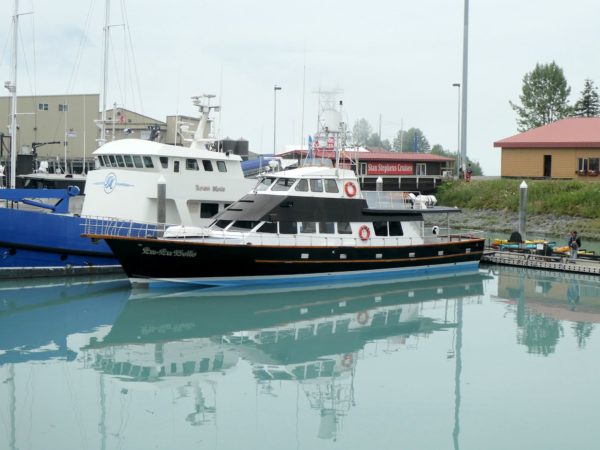
Our other highlight was a 9-hour cruise on the Lu-Lu Belle. Nick, Jenna and Sandy recommended Valdez as a less touristy place to get out on the water in Alaska, and the Lu-Lu Belle as providing a smaller, slower, and more intimate cruise among the choices in Valdez. Sounds awesome – and awesome it was! The 75-foot motor yacht, built and captained by her owner Fred Rodolph, is meticulously maintained with teak and mahogany trim over oriental carpets. Every surface sparkled. Guests are free to move around anywhere on the boat, including into the wheelhouse where Captain Fred stands at the helm, and even up onto the flying bridge.

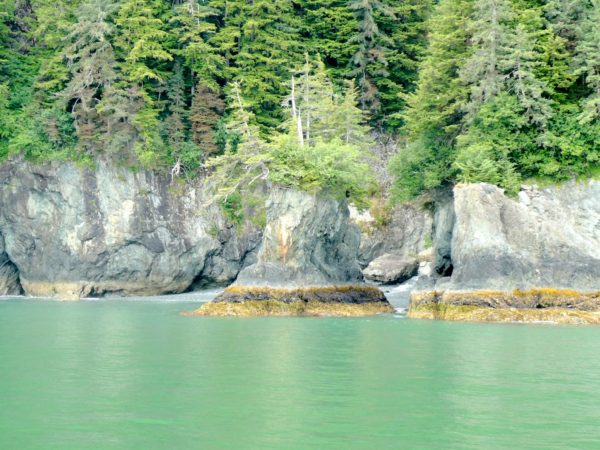
We left Valdez Harbor with low clouds over the water, providing pleasing views as fishing boats popped out of the mist. Heading through the Valdez Narrows, Captain Fred steered, narrated the sights, provided some history and tall tales all while keeping a sharp eye out for wildlife. Early on, we got to see playful sea otters, many, many birds and a bald eagle, all in the shadow of the Anderson Glacier. After crossing an expanse of Prince William Sound, we hugged the shoreline of Glacier Island. There we explored the island views with its steep cliffs and rocky tide-carved grottos, even poking the nose of the boat well into a couple of these caves. Sea lions lounged on the shore, occasionally sparring with one another or practicing their barking sounds. They were amusing to watch as we lingered a bit along the island.
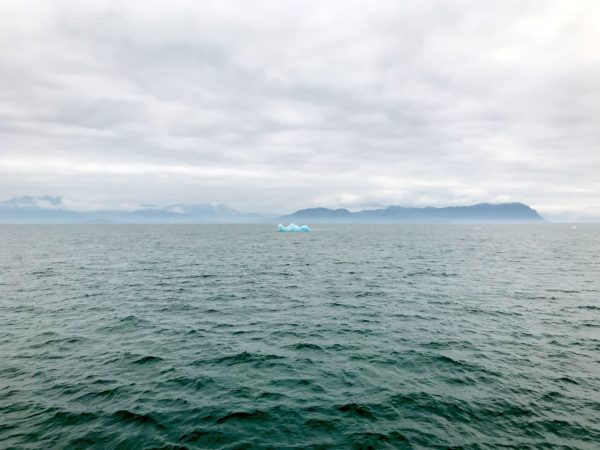
Then, as we turned to head into Columbia Bay, we started to spot big bluish splotches in the water – icebergs! Deeper into the bay, Captain Fred steered a slalom course through the icebergs, narrating the sights with stories from his own forty-year history of touring the bay and watching the Columbia Glacier retreat. In 1979, a huge rift formed at the head of the Columbia Glacier which eventually broke through and rather suddenly accelerated the glacier’s retreat. This left a ‘ridge’ in the bay where the glacier used to end. The water is only 60 feet deep at the ridge – and 700 feet deep on either side. Today, the end of the glacier is 11 miles upstream from where it broke through forty years ago, where it is expected to stabilize. From the ridge, we went another 10-3/4 miles further into the bay.
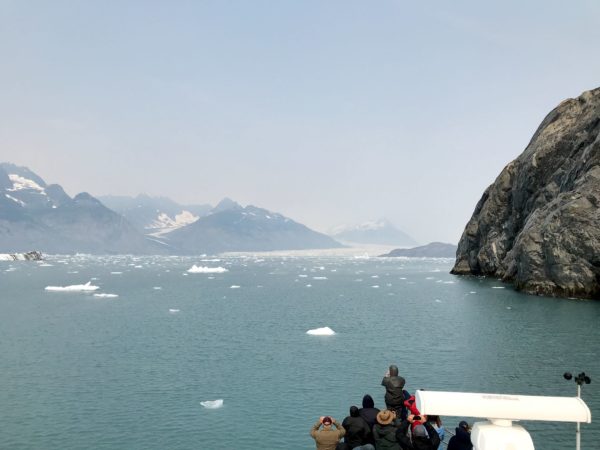
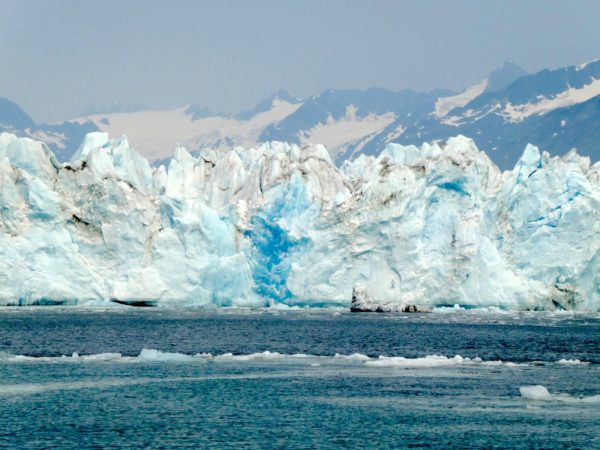
Wow! The Columbia Glacier is the second largest tidewater glacier in the US and the most easily accessible, if you can consider a 9-hour boat ride easy access. Its main face is a wall of multi-colored ice 100-200 feet high (plus 600-700 feet underwater) and a couple of miles wide. Once we were within 1/4 mile of the face, Captain Fred shut down the engines and we bobbed, for about an hour, surrounded by icebergs. It was like floating in the world’s largest slushie. Captain Fred’s narration stopped save for drawing our attention in the direction of calving of the glacier – where new icebergs were falling dramatically into the bay.
The most memorable part of the trip for me will always be the sounds of the glacier. Bobbing in the bay with our fellow passengers, all of us too enraptured to lift our jaws off the deck and talk. No sound, then a loud crack. If we were looking in the right direction, we’d see the sliding ice and rock before it hit the water with a thunderous roar. Then silence. Then we could feel some slights waves, then larger waves, then waves large enough to stir the icebergs around us. That sounded like someone was dumping a cooler of ice cubes into a water filled bathtub. Then all would become still and the cycle began again.
For anyone who’s interested, more Valdez, Valdez Glacier Lake, and Lu-Lu Belle pix… (Um… the Lu-Lu Belle got lots of pix – it was a 9-hour tour after all! For a condensed version, there’s a Lu-Lu Belle highlights album…). Also, getting there: Thompson Pass…
